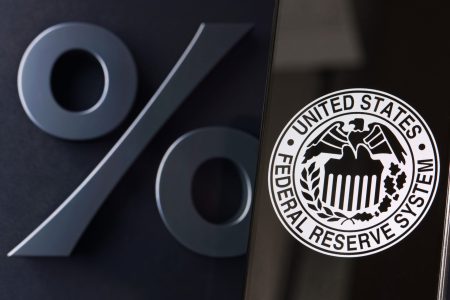Entrepreneur
In the heart of Hancock Park in Los Angeles, California, a tiny miscalculation caused a domino effect that altered everything about how I approach business and life. A baby hummingbird, no larger than a few of my fingers, darted through an open door on my balcony. What followed was not just a tale of attempted rescue but a profound lesson in business and life that I never expected to learn from such a small creature.
As entrepreneurs and business leaders, we often pride ourselves on our problem-solving abilities. That day, my partner and I threw everything at the situation. This cute little bird was clearly confused and starting to panic. We didn’t want to harm the animal or scare it more than it already was.
We tried brooms, mops and even a Swiffer extended to its full length in our attempt to guide the hummingbird back to the open door. We tried to make everything dark except the doorway, hoping it would see the apparent path out and follow the light. We crafted makeshift solutions recommended by friends and videos on YouTube, such as adding sugar to bowls of water and eventually to the tip of the Swiffer itself. Each attempt was met with the same result — failure, but with a slight variation. Sound familiar?
The hummingbird’s behavior was fascinating and frustratingly familiar. Hour after hour, it hovered near the ceiling, caught in what appeared to be an endless loop between two light fixtures. The bird had found what it considered a safe zone, a predictable pattern that offered the illusion of security. Despite our efforts to guide it toward freedom, it remained steadfastly committed to its chosen path.
We covered the high windows with dark placemats to eliminate false exits. We draped a blanket across the room to reduce its options. A persistent reflection of sunlight remained on a small patch of ceiling, beckoning like a siren’s call to this baby. The bird, much like many of us in our businesses, continued to chase this artificial light – a metaphor so perfect it hurt to witness.
The solution was tantalizingly simple: if the hummingbird had just flown two feet lower and a foot to the right, it would have found the open balcony door — its ticket to freedom. But it didn’t. It couldn’t. Or perhaps more accurately, it wouldn’t. The safety of its established pattern had become a prison of its own making.
As this drama unfolded, I couldn’t help but see the parallels to our own business behaviors. How many times have we, as entrepreneurs, found ourselves in similar patterns? We stick to what we know, circling the same strategies, the same markets, the same approaches. We might make minor adjustments — a new marketing angle here, a slight product modification there — but fundamentally, we remain within our comfort zones.
Think about the last time you faced a business challenge. Did you immediately reach for your tried-and-true solutions? Did you, perhaps, simply add sugar water to your Swiffer, so to speak, rather than completely rethinking your approach?
The comfort zone is seductive. It offers predictability, familiarity and a sense of control. But like our hummingbird friend, this perceived safety can become a trap. In business, staying too long in your comfort zone can lead to stagnation, missed opportunities and, eventually, obsolescence.
The most successful entrepreneurs I know have one thing in common: they regularly force themselves to look beyond their immediate surroundings. They understand that breakthrough moments rarely come from doing the same things slightly differently. Instead, they come from taking calculated risks and being willing to fly two feet lower and a foot to the right of where they usually operate.
Consider companies like Netflix, which began as a DVD-by-mail service but was willing to look beyond its comfortable business model to embrace streaming. Or think about IBM’s transformation from a hardware company to a services and cloud computing giant. These weren’t just slight variations on existing themes — they were fundamental shifts that required leaving the safety of the familiar.
The fear and panic our tiny hummingbird experienced when trying to escape mirrors the emotions many of us feel when facing significant change. It’s natural. It’s human. But unlike our feathered friend, we have the cognitive ability to recognize our patterns and consciously choose to break them.
So, what’s the practical takeaway from this unexpected encounter? Here’s the challenge I propose: Be the hummingbird for one day, one hour or even just one minute — but with awareness. Observe your patterns. Where are you hovering? What artificial lights are you chasing? Most importantly, what would happen if you flew just a bit lower and a little to the right of your usual path?
Try these steps:
- Map your flight pattern. Take 30 minutes to write down your recurring business challenges and typical responses to them, identifying where you might be “circling the same light fixtures” in your professional life.
- Create a two-foot zone. Select one current business challenge and force yourself to generate three completely new solutions you’ve never tried before, even if they initially seem uncomfortable or unconventional.
- Schedule pre-set freedom flights. Block out two hours each month specifically dedicated to exploring new business opportunities, markets or strategies just outside your current operation, treating this time as sacred as any other business commitment.
The next time you face a business challenge, resist the urge to immediately reach for your usual solutions. Instead, take a moment to look two feet outside your normal range of vision. Ask yourself: Am I solving the real problem or just adding sugar water to a Swiffer?
The path to growth, breakthrough and freedom often lies just beyond our comfort zone. It’s not about making dramatic, reckless changes. Sometimes, it’s as simple as making a minor adjustment in our perspective or approach. The window to opportunity might be closer than you think — if you’re willing to break free from the familiar patterns that keep you circling in place.
In business, as in life, the lights we chase aren’t always the ones that will lead us to where we need to go. The real question is: Are you ready to try a different flight path?
How did the hummingbird saga end?
After a few hours, the bird started to panic and flew around faster and faster. It was doing the exact opposite of what it should be doing, which is to slow down and look for a different solution instead of trying the same thing over and over. We continued to be guided by the bird and do the same thing.
Finally, we realized the only way to help this little bird was to lower the ceiling. That seems crazy, right? How do you lower the ceiling of a building? Together, we came up with a remarkable way to do just that.
We found two large cardboard packing boxes and cornered the bird (gently) with one of them. Then, we slid the second box across the ceiling in a parallel manner, in essence creating a makeshift birdcage with a cardboard ceiling. We slowly lowered the entire triangle birdcage until the new “ceiling” was flush with the top of the doorway. The bird immediately flew out into the big blue sky.
Read the full article here









